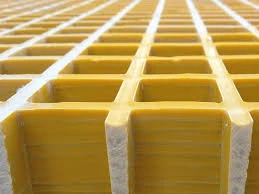loading...
- No. 9, Xingyuan South Street, Dongwaihuan Road, Zaoqiang County, Hengshui, Hebei, China
- admin@zjcomposites.com
- +86 15097380338
- Welcome to visit our website!
grp palisade fencing
The Benefits of GRP Palisade Fencing
In an age where security and durability are paramount, GRP (Glass Reinforced Plastic) palisade fencing has emerged as an innovative solution for various fencing needs. This article delves into the key features, benefits, and applications of GRP palisade fencing, highlighting why it has become a popular choice for both residential and commercial properties.
What is GRP Palisade Fencing?
GRP palisade fencing is a type of fencing made from a composite material that combines glass fibers and plastic resin. This unique formulation produces a material that is exceptionally strong, lightweight, and resistant to a range of environmental factors. The design typically consists of vertical slats, or pales, that are fixed to horizontal rails, providing a robust barrier while allowing visibility and air circulation.
Key Benefits of GRP Palisade Fencing
1. Durability and Longevity One of the most significant advantages of GRP fencing is its outstanding durability. Unlike traditional wooden or metal fences, GRP does not rot, corrode, or rust, making it ideal for locations with harsh weather conditions. Its lifespan can exceed 25 years with minimal maintenance, representing a long-term investment for property owners.
2. Lightweight Construction GRP fencing is notably lighter than metal or concrete alternatives. This lightweight characteristic facilitates easier handling, transportation, and installation, reducing labor costs and construction time. Despite its lightness, GRP maintains a strong structural integrity, providing robust security.
3. Aesthetically Pleasing Available in various colors and finishes, GRP palisade fencing can be customized to match the aesthetics of any property. Whether it’s for a residential garden or a commercial facility, the fencing can complement its surroundings while providing a clear delineation of space.
grp palisade fencing

4. Low Maintenance Requirements Unlike wood fencing that requires regular painting, staining, or treatment against pests, GRP fencing is virtually maintenance-free. It simply needs occasional cleaning with soap and water to maintain its appearance. This ease of maintenance is a significant advantage for busy homeowners and facilities managers alike.
5. Environmental Resistance GRP is highly resistant to UV rays, chemicals, and moisture. This resistance makes it suitable for industrial areas where exposure to harsh substances is common, as well as coastal areas where saltwater can cause significant damage to other fencing materials.
6. Eco-Friendly Options Many manufacturers of GRP fencing are increasingly focusing on using recycled materials in their production processes. This eco-friendly approach not only reduces waste but also appeals to environmentally conscious consumers looking to make sustainable choices.
Applications of GRP Palisade Fencing
GRP palisade fencing is versatile and can be used across various applications. Common uses include
- Industrial Sites Its strength and resistance to corrosion make it ideal for securing factories, warehouses, and distribution centers. - Public Parks and Gardens The aesthetic appeal and safety features of GRP fencing make it a popular choice for recreational areas where security and maintenance are concerns. - Schools and Educational Institutions Ensuring the safety of students and staff, GRP fencing can offer a secure perimeter around campuses while blending well with the environment. - Residential Properties Homeowners can enjoy the benefits of durability and aesthetic customization when using GRP fencing in their gardens or as boundary markers.
In conclusion, GRP palisade fencing provides a modern, durable, and aesthetically pleasing solution for various fencing needs. Its numerous benefits, including low maintenance, environmental resistance, and lightweight construction, make it an attractive option for both residential and commercial applications. As security concerns continue to grow, choosing a reliable and long-lasting fencing solution like GRP palisade fencing can provide peace of mind for property owners.
-
The Rise of FRP Profiles: Strong, Lightweight, and Built to LastNewsJul.14,2025
-
SMC Panel Tanks: A Modern Water Storage Solution for All EnvironmentsNewsJul.14,2025
-
GRP Grating: A Modern Solution for Safe and Durable Access SystemsNewsJul.14,2025
-
Galvanized Steel Water Tanks: Durable, Reliable, and Ready for UseNewsJul.14,2025
-
FRP Mini Mesh Grating: The Safer, Smarter Flooring SolutionNewsJul.14,2025
-
Exploring FRP Vessels: Durable Solutions for Modern Fluid HandlingNewsJul.14,2025
-
GRP Structures: The Future of Lightweight, High-Performance EngineeringNewsJun.20,2025
